BRAZIL
March 2, Santos, the port for Sao Paolo.
This was the day I was feeling ill, and went to Medical, where I tested positive for COVID-19. Needless to say, we did not go ashore. We ended up being confined to our stateroom for a whole week. I spent the day in bed.
March 3 – 8. The ship visited Rio de Janeiro, Cabo Frio, and Salvador do Bahia while we were in quarantine. When I had enough energy, I drew and painted. I made some adjustments to the value study I included in my last posting and did a watercolor of it.
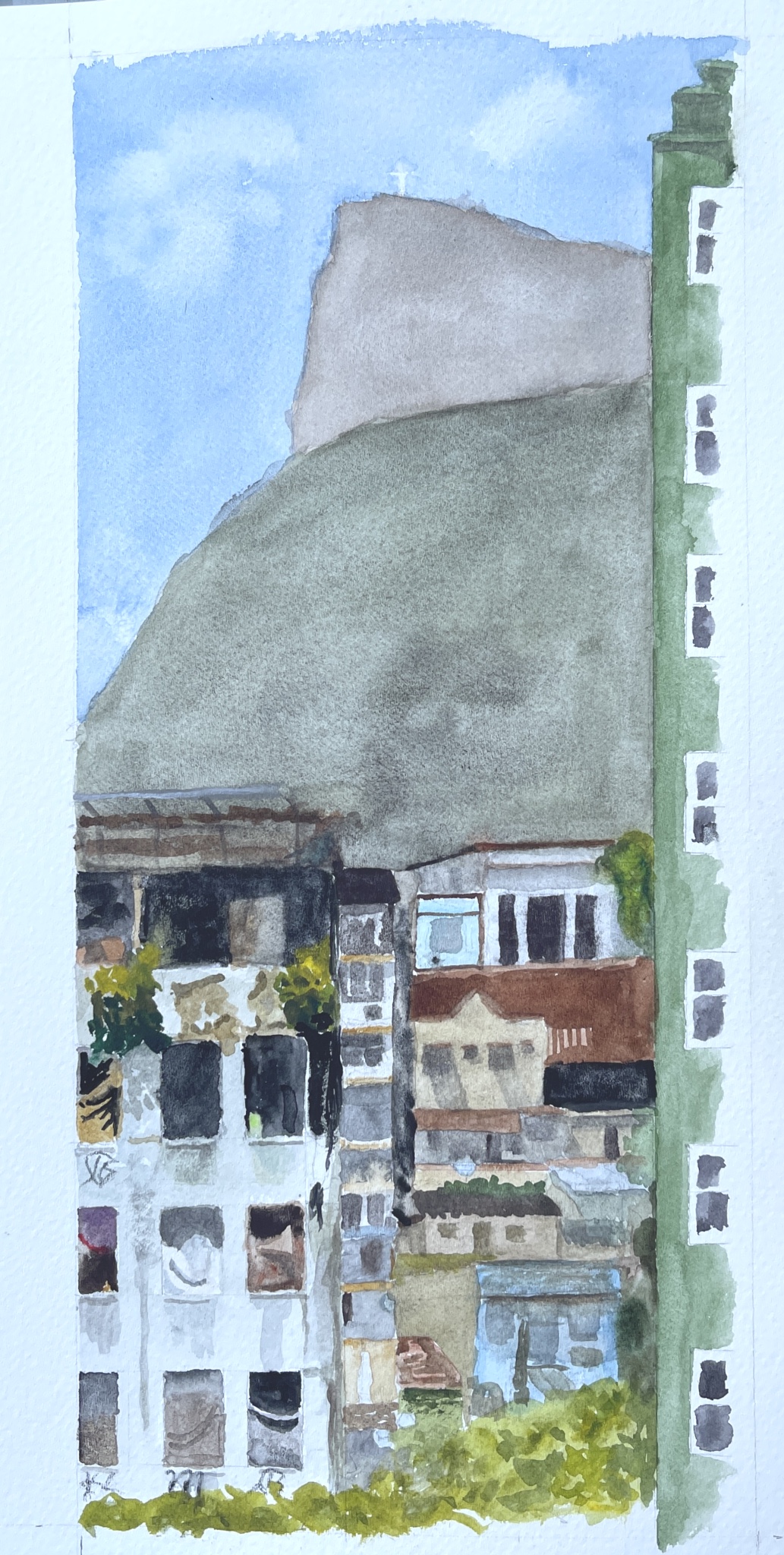
Reviewing my photos from Punta del Este, I did a drawing on my iPad of Casapueblo, the fanciful home the artist Carlos Páez Vilaró designed for himself, which is now a hotel and tourist attraction. It called for a very different approach for me.
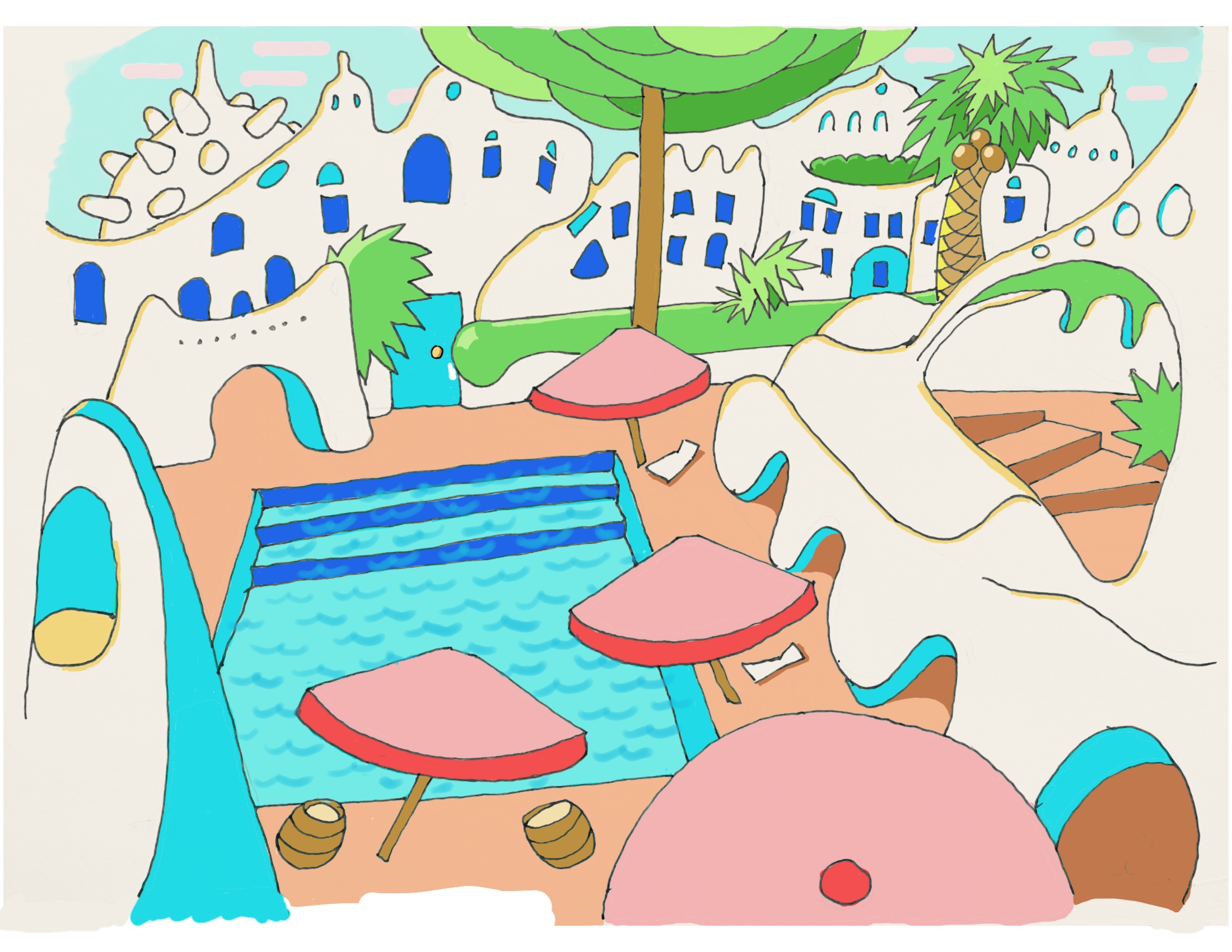
In a book of Oceania’s art collection, I found a picture of an interesting abstract painting, which I used for a master study.
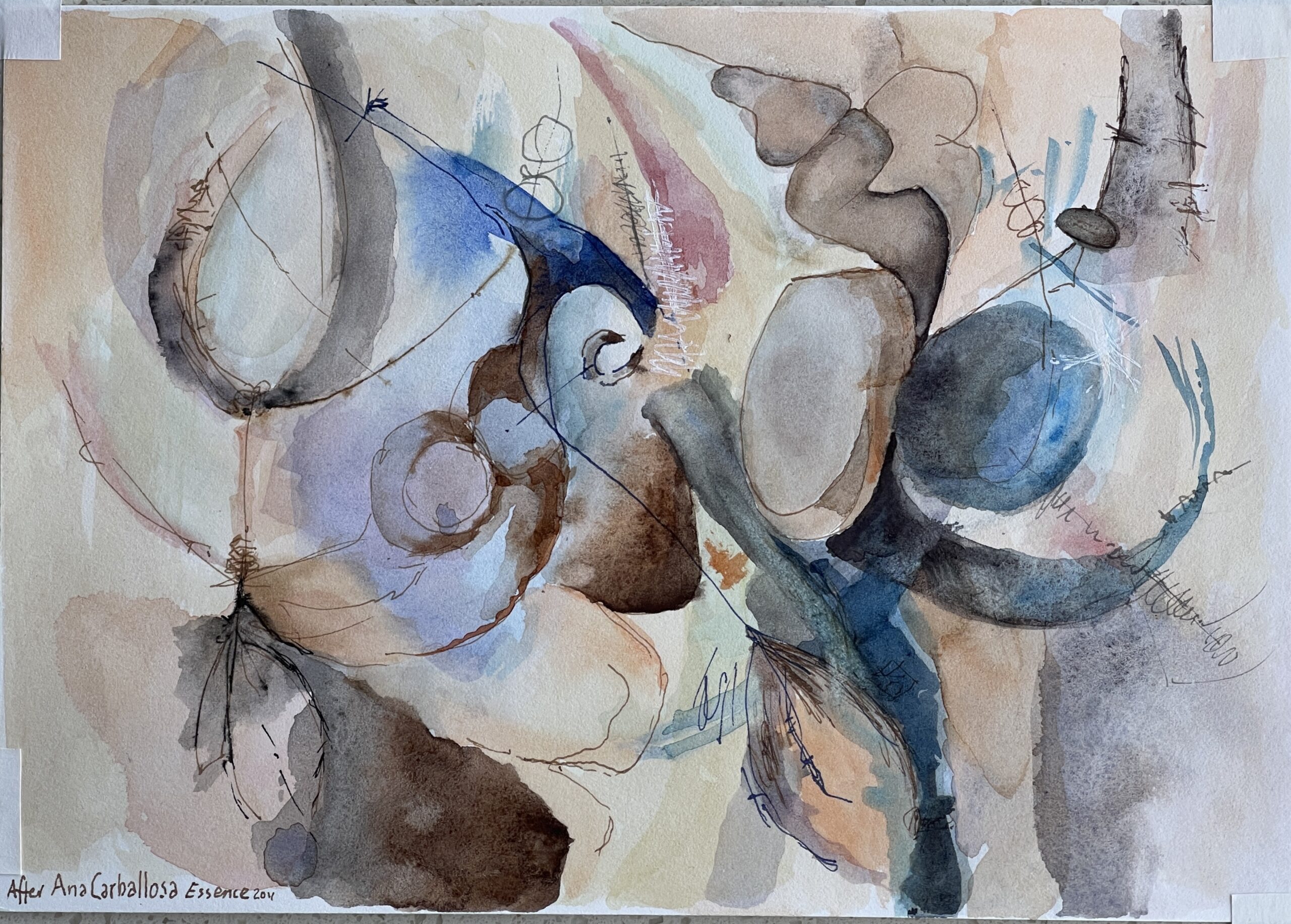
March 9, Mació. Released from quarantine! Still had to have our meals in our room; still had to wear a mask aboard ship, but we could go out! We took the shuttle into the city. It let us off near the beach, where we walked a bit and had lunch.
March 10, Recife. Mary went walkabout; found a handicrafts store in a re-purposed prison. I took a tour that included the Ricardo Brennand Institute. The “institute” was really a an homage by an incredibly wealthy man to himself. It was located on a huge, beautifully landscaped and maintained parcel of land, and had two large buildings full of stuff, anything that caught his fancy: paintings (the best were ones he commissioned of himself posing next to big sculptures he just bought), weapons and armor, clocks, globes . . . and a few important sculptures and copies of famous sculptures. A large cast of Rodin’s Thinker, a full-size, white marble of Michelangelo’s David, Giamb 16th century Rape of the Sabines. This was the first time I’d seen the Giambologna sculpture in the light. The original is in a museum, lit from every angle; the copy in Florence’s town square is in a loggia, in the shade. This copy was positioned in the middle of the moat of Brennand’s “castle” in beautiful sunlight. I had to try a pencil sketch, at least.

March 11, Natal. Mary: “one step above El Salvador.” We took the shuttle to the Tourist Center, a run-down colonial-era building, looked around it, took the bus back. Some people took the excursion to see their cashew tree. The most notable thing we saw was the crew’s life boat drill.
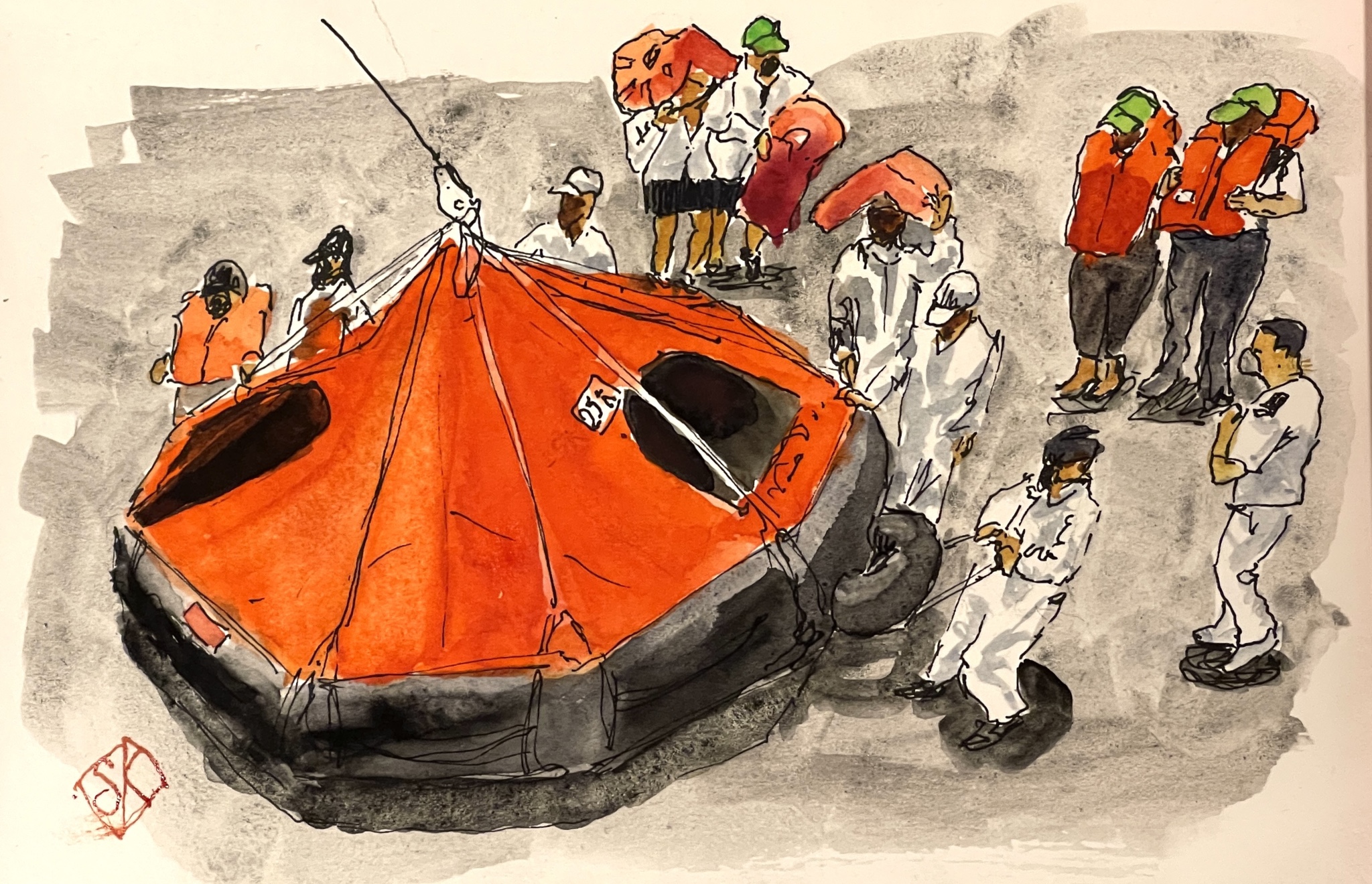
March 12, Fortaleza. Like Cabo Frio and Mació, another beach town. It provided a good spot to view the expanse of the beach. We walked a bit, then bought some cachaça at the supermarket. Can’t wait to try it.
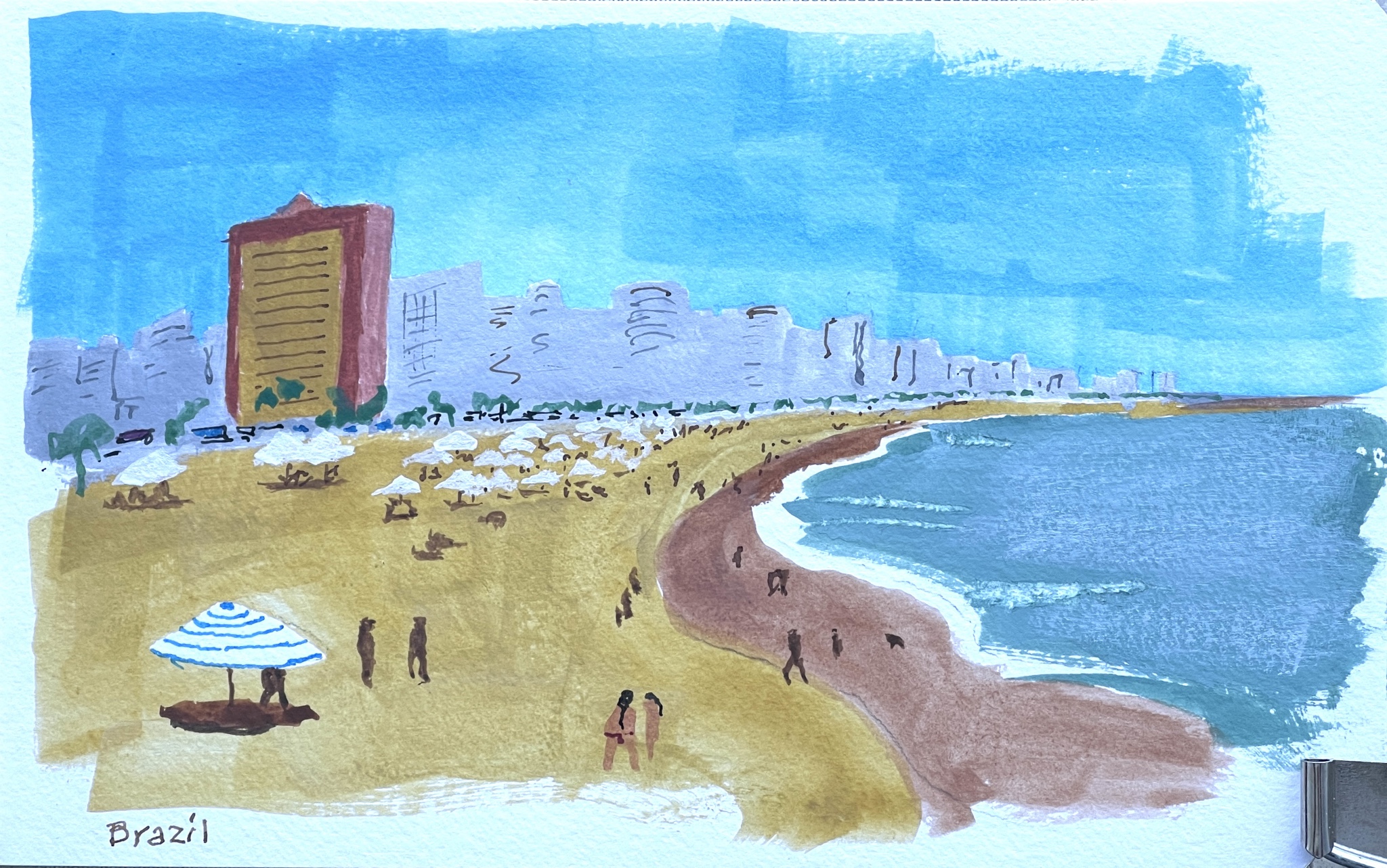
March 13–15, at sea, crossing the Atlantic. Mary was concerned about sea-sickness, after the bumpy crossings of Drake’s Passage, but it was quite calm. The only issue was an algae bloom, which left swaths of yellow-orange vegetation floating on the surface and caused the ship some problems, for example with its air conditioning system.
